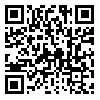BibTeX | RIS | EndNote | Medlars | ProCite | Reference Manager | RefWorks
Send citation to:
URL: http://journal.muq.ac.ir/article-1-581-en.html
2- Qom University of Medical Sciences ,
Background and Objectives: Angiography is the most common invasive method to assess coronary artery. Back pain is a common complication after coronary angiography among patients after coronary angiography that is associated with immobility and restricted positioning. This study compared the effectiveness of three changing position methods in bed on back pain severity and comfort level of patients after coronary angiography.
Methods: This study is a clinical trial carried out in angiography ward of Valiasre Hospital in Qom, Iran, in 2009. 75 patients undergoing angiography were randomly divided into three equal groups. The first group received the usual care after angiography, remaining supine and flat for 6 hours with the affected leg kept straight. In the second group, patients’ positions were changed hourly for 6 hours, varying between semi-Fowler’s (up to15° or 30° or 45°) positions. In the third group, patients’ positions were changed hourly for 6 hours, varying between supine, right side-lying and left side-lying. The data were collected by a questionnaire including demographic characteristics, visual analog scale of pain and comfort. Data were analyzed by chi-square test, Kolmogorov-Smirnov test, Loon statistics, Kruskal-Wallis, ANOVA, and repeated measures analysis of variance.
Results: Pain intensity in the second and third groups was significantly lower than the first group at 2, 4, and 6 hours after angiography (p<0.05); moreover, the discomfort level in the second and third groups was significantly lower than the first group at 2, 4, and 6 hours after angiography and the following morning (p<0.05).
Conclusion: The study findings showed that changing position in bed can prevent post angiographic patients, back pain and promote their physical comfort.
Received: 2016/04/6 | Accepted: 2016/04/6 | Published: 2016/04/6
| Rights and permissions | |
 |
This work is licensed under a Creative Commons Attribution-NonCommercial 4.0 International License. |







